The risk of developing hypertension increases with age. However, in younger individuals, it can be caused by other underlying health problems. When measuring blood pressure, the systolic pressure is measured first, followed by the diastolic pressure as the second value.
Types
We have two main types. Those are primary and secondary hypertension. More information about them is below.
Primary Hypertension
Primary hypertension accounts for over 90% of all hypertension cases. It is characterized by an inability to determine a specific cause for the condition. A diagnosis of primary hypertension is made only after ruling out any abnormalities that could lead to the disease, which means excluding secondary hypertension.
Genetic and environmental aspects impact the development of primary hypertension. Genetic factors can disrupt the hormonal and nervous systems that regulate blood pressure. These changes can increase the volume of circulating blood and cardiac output, cause blood vessels to constrict, and promote structural changes in blood vessel walls. As a result, this increases blood flow resistance and contributes to the development of hypertension. The genetic component is significant, as indicated by the fact that many individuals with hypertension also have a parent who suffers from the condition.
Environmental factors that contribute to hypertension include a high salt intake, a sedentary lifestyle, obesity, and stress. Hypertension likely develops from the interaction between genetic predispositions and environmental influences, meaning that certain environmental factors can trigger hypertension in individuals with a genetic vulnerability.
Secondary Hypertension
In contrast, secondary hypertension has specific identifiable causes.
For example, the kidneys have a significant function in regulating blood pressure. They produce renin, which is involved in the hormonal and nervous regulation of blood pressure. Normal blood pressure is maintained through various mechanisms, including the control of circulating blood volume, vascular wall tension, thirst regulation, and fluid intake—all influenced by renin and hormones released under its influence. Therefore, any dysfunction in the kidneys can impair blood pressure regulation, leading to the development of hypertension. Pathology may affect various structures of the kidney:
- Renal vessel diseases
- Renal parenchyma diseases
- Extrarenal changes
- Cushing’s syndrome
- Pheochromocytoma
- Acromegaly
- Hyperthyroidism
Moreover, obstruction of the airways at the throat level caused by the tongue collapsing during sleep leads to chronic sleep deprivation and fatigue. It activates the sympathetic nervous system, which stimulates the heart to contract more frequently and strongly.
Neurological diseases, such as brain tumors and injuries, and conditions like polyneuritis can disrupt blood pressure regulation at the level of the central nervous system.
Drug-induced hypertension can occur due to certain medications, including steroids, oral contraceptives, catecholamines, and immunosuppressive drugs, which elevate blood pressure by affecting various metabolic pathways.
Hypertension can also be caused by toxic substances, including recreational drugs such as amphetamines and cocaine, as well as nicotine, alcohol abuse, and heavy metal poisoning.
Additionally, hypertension that develops during pregnancy is a distinct concern. It typically arises in the second half of pregnancy and resolves after delivery.
Risk Factors
Many factors increase the risk of developing hypertension. We divide them into two categories. Those are modifiable and unmodifiable ones.
Unmodifiable Factors
The risk factors for hypertension that are beyond our control include:
- Age – in both women and men, the risk of hypertension increases rapidly with each year after the age of 40. It has been proven that in men, hypertension develops more often in middle age (around the age of 45), while in women, hypertension problems appear more often after the age of 65.
- Ethnicity – black people show increased blood pressure values much earlier and more often. They also more often experience severe complications of hypertension.
- Family burden is the third important risk factor for hypertension that we have no influence over. This is because the main causes of excessively high blood pressure are genes and environmental factors, and we have these in common with our relatives.
Modifiable Factors
The risk factors for hypertension that depend on us are:
- Overweight and obesity – in this case, increased tissue mass requires the circulatory system to work harder to provide all body cells with the right amount of oxygen and nutrients. The aforementioned increased work leads to an increase in blood pressure and consequently to the development of hypertension.
- Smoking can also lead to hypertension – nicotine contained in tobacco smoke is a chemical that directly leads to an increase in blood pressure during smoking and for some time after it has ended. This compound also leads to permanent damage to the vessels, causing, among other things, the narrowing of the arteries, which is associated with a constant increase in blood pressure.
- A lack of physical activity leads primarily to obesity and insulin resistance, which can lead to the development of type 2 diabetes. All of the above factors harm the value of blood pressure. Additionally, people who are not active tend to have a constant, accelerated heart rate, which also increases blood pressure.
- Stress – stressful situations lead to increased blood pressure and increased heart rate. Chronic, permanent stress causes the same effects and can lead to persistent hypertension.
- The incidence of hypertension increases with age – at 18-30, it is 5%, and after 65, about 60%. In the case of renovascular hypertension, however, the disease often occurs before the age of 30.

Symptoms
Hypertension is accompanied by:
- Headaches
- Difficulty concentrating, hyperactivity
- Palpitations
- Temporarily occurring redness of the face, neck, chest
- Excessive sweating
In more advanced stages of the disease, symptoms resulting from complications of hypertension appear:
- Pain behind the sternum
- Easy fatigue, shortness of breath
- Tinnitus
- Dizziness
- Attack headaches with nausea and vomiting
- Visual disturbances
- Symptoms of renal failure
A hypertensive crisis requires immediate medical intervention. Symptoms heralding the occurrence of a hypertensive crisis include:
- Severe dizziness and headaches
- Sudden vision impairment
- Shortness of breath
- Rapid heart rate and chest pain
The non-specific symptoms resulting from high blood pressure listed at the beginning do not require urgent medical consultation. Still, they should prompt you to check your blood pressure at home and discuss your symptoms with your doctor during a scheduled visit. However, they should certainly not be underestimated because early detection and treatment of hypertension can reduce the likelihood of dangerous complications.
Diagnosis
Hypertension is when, in at least two separate measurements, the systolic blood pressure values exceed 140 and the diastolic blood pressure exceeds 90 mmHg (millimeters of mercury).
Diagnostic methods used to diagnose hypertension:
- Blood pressure measurement
- Exclusion of organ complications in the patient
- Echocardiographic examination of the heart
- Laboratory tests
Treatment
Treatment aims to maintain blood pressure below 140/90 mmHg. In the case of secondary hypertension, the basis is to remove the cause of hypertension, e.g.:
- Dilation of the narrowed renal artery
- Removal of pheochromocytoma
- Surgical correction of coarctation of the aorta
What Treatment Method Should I Choose?
The choice of specific pharmacotherapy is determined by:
- Blood pressure value
- Age
- Coexisting diseases
- Risk factors for cardiovascular incidents
For individuals with a low cardiovascular risk (less than 5%) and blood pressure below 180/110 mmHg, as long as there are no organ complications, lifestyle modifications may be adequate. If, after a few months, blood pressure decreases to below 140/90 mmHg, it’s significant to continue with the lifestyle changes and consult your doctor annually.
If blood pressure is below 180/110 mmHg but there are organ complications or the overall cardiovascular risk exceeds 5%, it’s advisable to consider pharmacological treatment in addition to lifestyle modifications.
Blood pressure readings above 180/110 mmHg, particularly in life-threatening situations require immediate intervention. It should involve the intravenous administration of fast-acting blood pressure-lowering medications.
Treatment of hypertension in seniors often requires lifestyle changes and the combination of several drugs with different mechanisms of action (diuretics and calcium channel blockers are preferred).
In the case of patients with diabetes, in addition to lifestyle changes, it is most often necessary to use at least three drugs, including ACEI or ARB. The goal of antihypertensive treatment in patients with diabetes is to achieve a blood pressure value of <130/80 mmHg.
During Pregnancy
Pregnant women with hypertension should limit physical activity, rest on their left side, follow a normal diet without salt restriction, and use specific medications. The preferred drugs include methyldopa, labetalol, calcium channel blockers, and β-blockers, while ACE inhibitors and ARBs are contraindicated. Diuretics should be avoided unless urination is impaired. A blood pressure of more than 170/110 mmHg in pregnant women is an urgent condition that requires immediate medical attention.
Pharmacological Treatment
Pharmacological treatment involves the use of one or more drugs that, by acting on the mechanisms regulating the blood pressure value, lead to its reduction. The basic hypotensive (antihypertensive) drugs are:
- β-blockers
- Calcium channel blockers
- ACEI-converting enzyme inhibitors
- Angiotensin receptor blockers (ARB)
- Diuretics
One of the factors contributing to the development of hypertension is an increase in blood volume. We can address this issue by administering diuretics, such as indapamide or furosemide, which help eliminate excess fluid. Alternatively, β-blockers can be used to reduce cardiac output, which is the amount of blood the heart pumps in one minute.
The second basic mechanism of hypertension is vasoconstriction; it can be prevented by administering drugs that act directly on the vessel wall and lead to relaxation:
- ACEI
- ARB
- Calcium channel blockers
In addition to these basic drugs, many others are also used, differing in their mechanisms of action.
Recommendations
The doctor should inform the patient about the temporary side effects of the medication, which usually subside after 2-4 weeks. Patients often stop taking these medications on their own, unaware that the feelings of fatigue and lack of energy are only temporary.
Blood pressure-lowering medications should be taken in the morning, as blood pressure tends to be highest just after waking up. The timing of any additional doses during the day should be based on the patient’s blood pressure readings and overall condition. Generally, it is advised to avoid taking medication before bed, as blood pressure typically drops at night, which could lead to cerebral ischemia and neurological issues.
Single-drug therapy is effective in some cases. If it does not yield satisfactory results, a second or third drug with a different mechanism of action should be added. When using multiple medications, the dosage of each can be lower than if they were taken alone, achieving the same antihypertensive effect. This approach helps reduce side effects, and targeting multiple mechanisms of blood pressure regulation makes the treatment more effective.
People with high blood pressure higher than optimal should introduce modifications to their lifestyle such as those of patients with mild hypertension. It allows one to avoid pharmacological treatment or at least delay the moment of its initiation.
When properly managed, hypertension does not restrict a patient’s normal daily activities. To achieve the desired therapeutic outcomes, patients must actively participate in their treatment. Taking daily blood pressure measurements at home can be beneficial for monitoring treatment effectiveness. By recording these results, patients can track the success of their therapy over time.
Lifestyle Change
The basis for achieving proper blood pressure control is not pharmacotherapy, but activities that the patient can independently implement in their daily life:
- Reduction of obesity
- Reduction of salt intake
- Mediterranean diet
- Regular physical activity
- Limiting alcohol consumption
- Quitting smoking
- Avoiding stress, relaxation training
Complications
The most serious complications of hypertension are:
- Myocardial infarction
- Cerebral stroke
- Heart failure and left ventricular hypertrophy
- Renal failure
- Aortic dissection
- Hypertensive retinopathy
- Generalized atherosclerosis
Sources
- What Is High Blood Pressure?. NIH.
https://www.nhlbi.nih.gov/health/high-blood-pressure - Essential Hypertension. NIH.
https://www.ncbi.nlm.nih.gov/books/NBK539859/ - Secondary Hypertension. NIH.
https://www.ncbi.nlm.nih.gov/books/NBK544305/ - Causes and Risk Factors. NIH.
https://www.nhlbi.nih.gov/health/high-blood-pressure/causes - Symptoms. NIH.
https://www.nhlbi.nih.gov/health/high-blood-pressure/symptoms - Diagnosis. NIH.
https://www.nhlbi.nih.gov/health/high-blood-pressure/diagnosis - Treatment. NIH.
https://www.nhlbi.nih.gov/health/high-blood-pressure/treatment - Pregnancy and High Blood Pressure. NIH.
https://www.nhlbi.nih.gov/health/high-blood-pressure/pregnancy - Pharmacotherapy for Essential Hypertension: A Brief Review. NIH.
https://pmc.ncbi.nlm.nih.gov/articles/PMC9733188/ - Lifestyle management of hypertension: International Society of Hypertension position paper endorsed by the World Hypertension League and European Society of Hypertension. NIH.
https://pmc.ncbi.nlm.nih.gov/articles/PMC10713007/ - About High Blood Pressure. CDC.
https://www.cdc.gov/high-blood-pressure/about/index.html
Anemia: What Is, Causes, Symptoms, and Types
Hemorrhoids: What Are, Symptoms, Treatment, and Prognosis
GERD: What Is, Causes, Signs, and More

Bacterial Vaginosis: What Is, Causes, Symptoms and More

Bird Flu: What Is, In Humans, and In Birds
Congestive Heart Failure: What Is, Causes, Symptoms, and More
Hiatal Hernia: What Is, Types, Causes, Signs, and More
Atherosclerosis: What Is, Causes, Symptoms, and More
Cellulitis: Causes, Symptoms, Treatment, and Prevention
Tourette Syndrome: What Is, Causes, Symptoms, and More
Bipolar Disorder: What Is, Causes, Symptoms, and Phases
Osteoarthritis: What Is, Causes, Risk Factor, Symptoms, and More
Coronavirus Disease (COVID-19): What Is, Transmission, and More
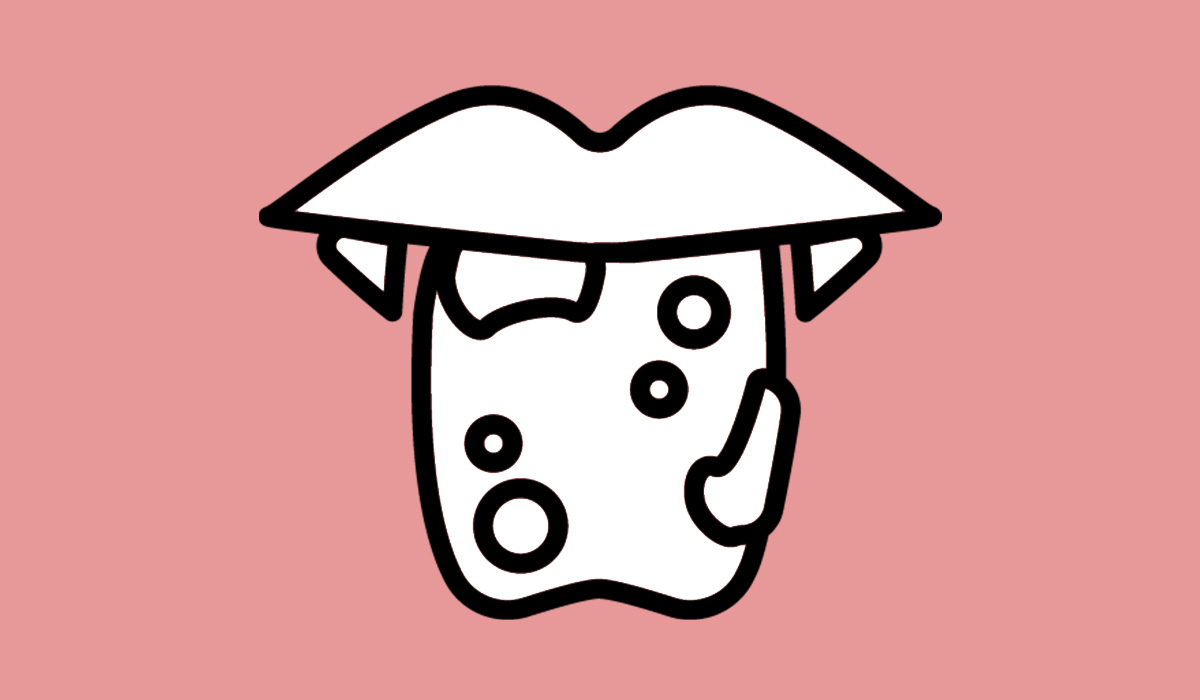
Scarlet Fever: What Is, Causes, Symptoms, and Similar Ailments
Sciatica: What Is, Symptoms, Diagnosis, and Treatment
